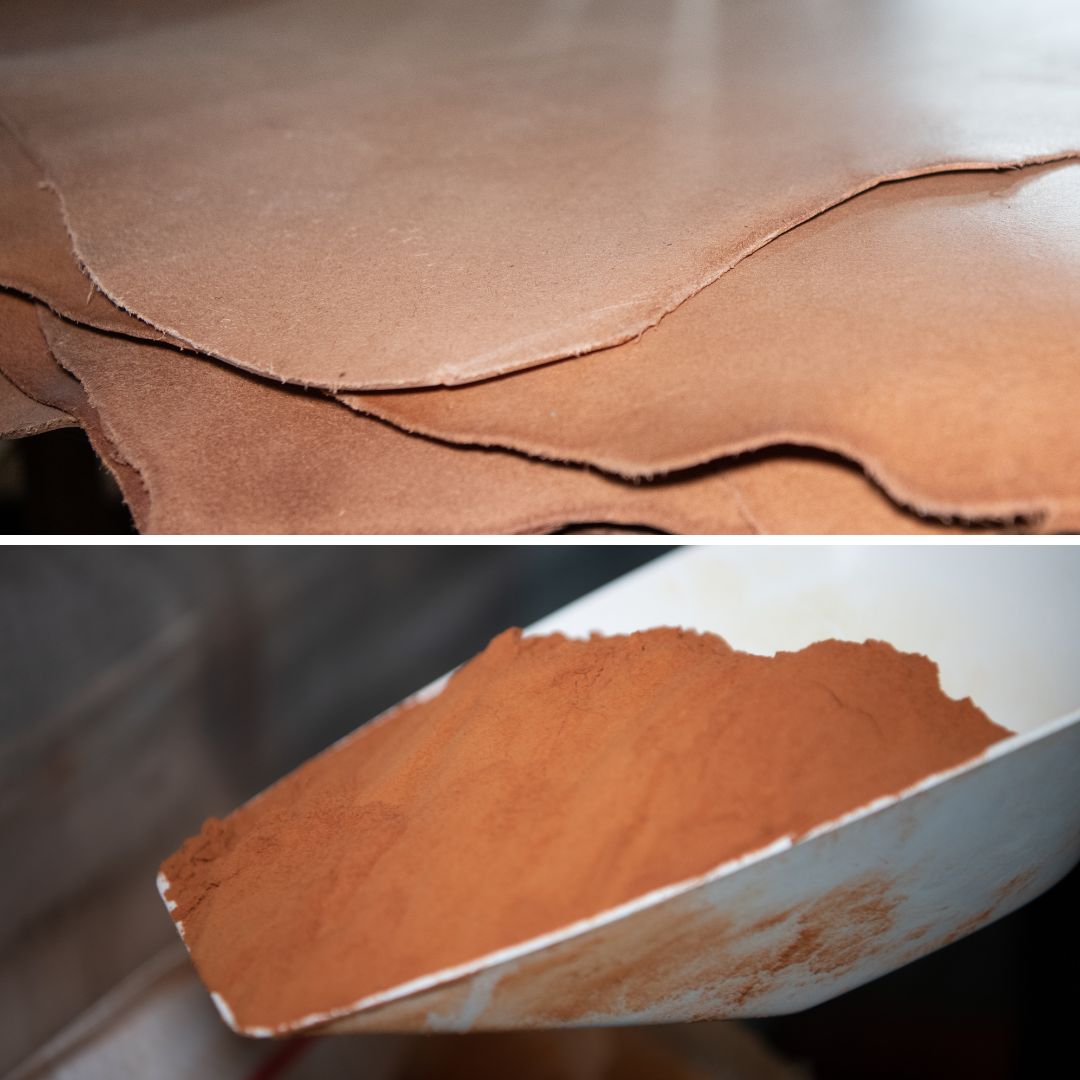As explained in our blog post on the finish of the leather, a leather can have several finishes: aniline, semi-aniline and pigmented.
But it is not always easy to identify the finish of a leather. We share with you a method to recognize the type of finish that has been applied to your leather: the dilution technique.
Recognize the finish of leather: explanation of the dilution technique
Nothing could be easier, just bring along :
- A container
- Solvent
- Your strip of leather
- A flat cardboard
- A cutter
These different elements at your disposal, start by immersing your leather in the solvent. After a few minutes, you will see several possible reactions depending on the finish of the leather.
On our video, we carry out the test on leathers with different finishes: pigmented finish applied with a rollerblading, pigmented finish applied with a spray and finally aniline finish.
Test on a leather with a pigmented finish applied with a rollerblading
After a few seconds of immersing the leather with a pigmented finish applied with a rollerblading, you will see bubbles on the grain side of the leather.
After one minute of immersion, you can remove the leather from the solvent and place it on the flat cardboard. The layer of pigments will then come off completely from the grain of the leather.

Test on a leather with a pigmented finish applied with spray
The test on our video is made with our Pykara saddle leather, having a pigmented spray-applied finish.
After one minute of immersion, the leather can be removed from the solvent and placed on the flat cardboard. Take the cutter and lightly scrape the grain side of the leather. You may notice solvent residue on the cutter blade.

Test on aniline finish leather
The test on our video is done with our Niagara and Angel saddle leathers, both with an aniline finish.
After a few seconds of immersion of the leather in the solvent, you can see that the aniline finish disgorges into the solvent, the solvent takes on the colour of the aniline finish.
After one minute of immersion, you can remove the leather from the solvent and place it on the flat cardboard. Lightly scrape the grain side of the leather with the cutter, and you will observe that the leather blade is clean, no pigment residue.

The dilution technique on video:
Discover our technique for recognising vegetable-tanned leather in our blog post: here








